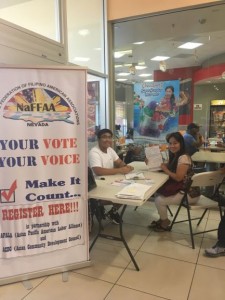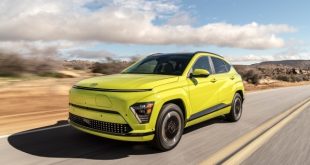By Jennie L. Ilustre
American voters of Asian heritage can be a swing vote in battleground districts in the November 6 midterm elections, according to political observers in the community.

“Where can Asian American and Pacific Islander voters have maximum impact in 2018?” is the title of Sono Shah and Karthick Ramakrishnan’s piece for Data Bits, the official blog of AAPIData. In it, the writers provided a closer look at competitive congressional races “where Asian Americans and Pacific Islanders (AAPIs) could make a critical difference in determining the winner.”
They focused on competitive races for the House of Representatives in the US Congress–and on “constituent groups in those races that can tip the balance in favor of one party over another.”
Shah and Ramakrishnan analyzed districts where AAPIs represent at least 5 percent of qualified voters. This gave them a total of 27 congressional districts spanning 11 states, including in places where AAPIs are a fast-growing segment of the population. The pair used the Cook Political Report ratings of battleground districts as of September 12 for the House of Representatives. The Cook Political Report is a top non-partisan election analyst.
Most Mainstream political experts, as well as surveys, point to a likely “blue wave,” or Democrats retaking the House of Representatives in the US Congress. Democrats need to keep their seats and win 24 additional seats to gain the majority in the 435-seat House. In the 100-member Senate where Republicans have a razor-thin advantage, Mainstream political experts say the outcome is hard to predict.
“Tossup” Districts
The Cook Political Report defines “tossup” seats as the most competitive, where “either party has a good chance of winning.”
One of the first things to note, Shah and Ramakrishnan pointed out, is “the sheer number of ‘toss-up’ seats with significant AAPI eligible voters” this year–a total of 11.
In California, where the AAPI population is the largest in the country, there are 9 races where AAPIs make up a significant portion of the voters. A total of 5 are rated as toss-up seats currently held by Republicans.
1. In California’s 39th district, where nearly 3 out of 10 voters are of Asian heritage (29% of the district’s electorate are AAPIs), Republican State Assembly Member Young Kim faces Democrat and Navy veteran Gil Cisneros in a close race for the open seat.
2. In the 8th district, where 18% of the electorate is of Asian heritage, incumbent Dana Rohrabacher (R) faces businessman and lawyer Harley Rouda (D).
3. In California’s district 45, incumbent Mimi Walters (R) is in a close race with Law Katie Porter (D), a law professor at UC Irvine, where 1 in 5 eligible voters is AAPI.
4. California is not the only state with toss-up districts and significant AAPI populations. In Texas, for example, AAPI voters could play a significant role in TX-07, where AAPIs make up 9% of the electorate. Incumbent John Culberson (R) is in a close race against attorney Lizzie Pannill Fletcher (D).
5. AAPIs also represent between 5% and 8% of the voters for competitive races in New Jersey (NJ-7); Illinois (IL-06); Washington state (WA-08), and Michigan (MI-11).
“Leaning Districts”
The Cook Political Report identifies “leaning” districts,” which it defines as “competitive races, but one party has an advantage.” AAPIs represent at least 5% of the district voters in 7 races across 6 states.
1. In Nevada’s 3rd district, where AAPIs make up 12% of the electorate, Susie Lee (D) is slightly favored to win the open seat over Danny Tarkanian (R).
2. In the East Coast, key open seat races in Virginia’s district 10 and New Jersey’s district 11 are rated as “lean Democratic”–with AAPIs in both districts representing at least 8% of the voters.
“Likely” or “Safe” Districts
The Cook Political Report identifies “likely” districts–districts that are “not considered competitive at this point, but have the potential to become engaged.”
1. Among the 9 safe or “likely” races, AAPIs comprise the largest share of the voters at 15% in the 22nd district of Texas. Incumbent Pete Olson (Republican) is favored over Sri Kulkarni (Democrat).
2. AAPIs form 14% of the voters in the seventh district of California, where incumbent Ami Bera (D) is expected to cruise to reelection over business executive Andrew Grant (R).
3. AAPIs also represent a significant share of qualified voters in two other likely Democratic races: California’s 16th district (9%), New Jersey’s 5th district (8%) and Northern Virginia’s 4th district (6%).
4. Among likely Republican races, AAPIs make up 6% of the voters in Texas’ district 2, 8% in TX-24, more than 10% in Georgia’s district 7, and over 11% in New York’s district 11.
 Asian Fortune Your source for all things Asian American
Asian Fortune Your source for all things Asian American




